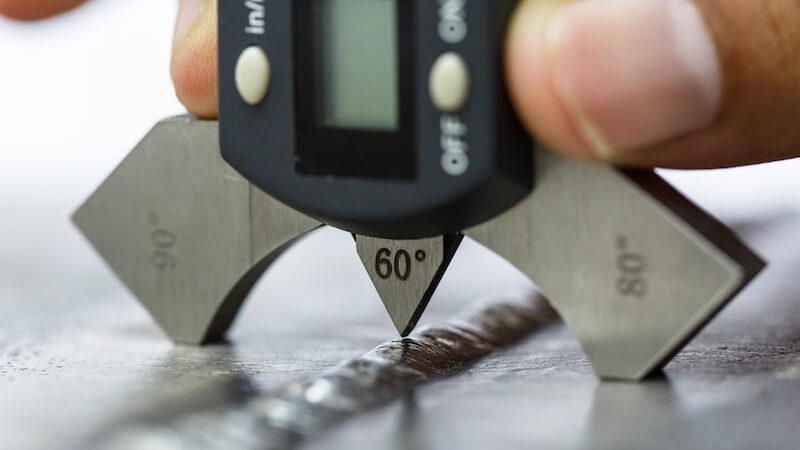How to Prepare for a Welding Inspection Milwaukee Professionals Recommend
How to Prepare for a Welding Inspection Milwaukee Professionals Recommend
Blog Article

Checking Out the Different Approaches and Specifications of Welding Evaluation for Achieving Compliance and Reliability in Design Applications
The relevance of welding evaluation in design applications can not be overemphasized, as it functions as a vital safeguard for making sure structural integrity and compliance with sector requirements. Numerous approaches, consisting of visual examination and advanced non-destructive screening methods, provide necessary insights right into the quality of welds. Adherence to recognized governing standards such as those from AWS and ASME establishes a framework for liability and excellence. Nevertheless, the landscape of welding examination is constantly progressing, motivating a better exam of emerging practices and their ramifications for engineering dependability. What might these developments entail for future jobs?
Significance of Welding Evaluation
Welding inspection plays a critical role in guaranteeing the integrity and safety of bonded structures. This process involves the organized exam of welds to confirm conformity with fixed criteria and specs. The importance of welding evaluation can not be overstated, as it works as a guard versus prospective failures that can result from inadequate welding practices. Via strenuous assessment, problems such as fractures, voids, and poor combination can be identified early, therefore preventing tragic failings that may bring about architectural collapse or safety and security dangers.
Additionally, welding inspection is crucial for preserving quality control throughout the welding procedure. It makes certain that the welds satisfy the required mechanical and physical homes required for their designated applications. Normal evaluations likewise cultivate a culture of liability and continuous improvement within welding operations, motivating adherence to ideal practices and industry criteria.
In regulated markets such as aerospace, building and construction, and manufacturing, strict welding examination protocols are mandated to follow legal and safety demands. Ultimately, efficient welding inspection not only secures human life and residential property but also improves the longevity and integrity of welded structures, making it a crucial aspect of design and building and construction.

Usual Welding Assessment Approaches
A selection of assessment techniques are utilized to evaluate the high quality and stability of welds, each tailored to spot particular kinds of defects. Among the most usual techniques is visual inspection, which includes a detailed assessment of the weld surface to identify noticeable problems such as cracks, damages, and insufficient fusion. This method is usually the primary step in the examination procedure because of its simpleness and cost-effectiveness.
An additional widely made use of technique is radiographic inspection, where X-rays or gamma rays pass through the weld to expose interior problems. This strategy is especially reliable for identifying porosity and incorporations within the weld material. Ultrasonic testing employs high-frequency audio waves to determine inner defects, supplying a detailed analysis of the weld's honesty.
Moreover, magnetic particle evaluation is made use of for ferromagnetic materials, permitting the discovery of surface and near-surface flaws by observing and applying magnetic areas bit patterns. Last but not least, dye penetrant testing entails using a liquid dye to the weld surface, disclosing cracks and other suspensions upon evaluation. Each of these approaches plays a critical role in guaranteeing weld high quality and conformity with market criteria
Non-Destructive Testing Techniques
Non-destructive testing (NDT) methods are necessary try this site devices in the analysis of weld top quality, allowing inspectors to evaluate the integrity of welded joints without triggering damages to the materials. Different NDT techniques are used to identify potential defects, guaranteeing that welds satisfy the required requirements for security and performance.
One of the most prevalent techniques is ultrasonic screening (UT), which utilizes high-frequency acoustic waves to discover internal defects such as cracks or gaps. Radiographic testing (RT) utilizes X-rays or gamma rays to create pictures of welds, revealing any gaps within the product. Magnetic fragment testing (MT) is effective for discovering surface and near-surface flaws in ferromagnetic products with the application of magnetic fields and contrasting particles.
Fluid penetrant testing (PT) is another widely made use of technique that involves using a dye to the surface area of the weld, which leaks into any kind of splits, making them visible under ultraviolet light. Each of these approaches gives one-of-a-kind advantages and limitations, and the option of an ideal method is important to accomplishing accurate analyses of weld integrity. Inevitably, the implementation of NDT techniques significantly adds to the reliability and safety and security of engineering applications.

Governing Criteria and Conformity
In the world of welding evaluation, adherence to governing standards and conformity is critical to make certain the safety and dependability of bonded frameworks (Welding Inspection Milwaukee). Various organizations, consisting of the American Welding Culture (AWS), the American Culture of Mechanical Engineers (ASME), and the International Organization for Standardization (ISO), have actually developed standards that govern welding practices and assessment procedures. These Related Site requirements provide a framework for high quality guarantee, laying out the essential qualifications for assessors and the methods for examining weld integrity
Conformity with these governing criteria not just boosts the structural stability of bonded settings up however additionally minimizes dangers connected with failures, which can have devastating repercussions. Assessments have to be executed utilizing defined procedures, including visual, ultrasonic, and radiographic approaches, to guarantee that welds satisfy specified criteria.
Furthermore, adherence to these requirements is typically required by regulation, especially in sectors such as aerospace, building and construction, and manufacturing. Normal audits and accreditations are important to maintain compliance, thus promoting a culture of security and quality within companies. Ultimately, regulatory requirements and compliance act as the backbone of reliable welding evaluation techniques, guaranteeing that crafted structures fulfill both performance assumptions and security needs.
Best Practices for Welding Examination
While maintaining compliance with regulatory requirements is critical, executing ideal practices for welding evaluation even more improves the safety and security and integrity of bonded frameworks. Reliable welding evaluation starts with comprehensive planning, which consists of understanding the particular requirements of each job and ensuring inspectors are trained in relevant techniques and criteria.
Utilizing an extensive examination list helps to make sure all critical aspects are evaluated, such as weld size, infiltration, and aesthetic defects. Non-destructive testing (NDT) techniques, such as ultrasonic or radiographic screening, must be used where suitable, giving an extra in-depth evaluation of weld quality without compromising the honesty of the products.
Documents plays a substantial duty in ideal techniques; keeping exact records of evaluations, including photographs, test outcomes, and conformity reports, ensures accountability and facilitates future analyses. In addition, promoting a culture of open communication in between welders and assessors can cause early identification of potential concerns, advertising instant corrective activities.
Conclusion
In summary, the implementation of strenuous welding examination techniques and adherence to established criteria are essential for ensuring conformity and dependability in engineering applications - Welding Inspection Milwaukee. Strategies such as visual examination, radiographic screening, and ultrasonic testing function as vital tools in recognizing problems and maintaining top quality guarantee. By promoting a society of responsibility and excellence, companies can boost the stability and longevity of bonded frameworks, ultimately adding to the safety and efficiency of engineering jobs
Various approaches, including aesthetic evaluation and progressed non-destructive testing methods, provide important understandings into the high quality of welds.Welding inspection plays an essential role in guaranteeing the stability and safety and security of bonded frameworks.A variety of assessment methods are employed to assess the high quality and honesty of welds, each tailored to discover details types of issues.Another widely utilized approach is radiographic assessment, where X-rays or gamma rays penetrate the weld to expose inner issues.In the realm of welding evaluation, adherence to regulative discover here criteria and compliance is critical to make sure the safety and security and integrity of bonded frameworks.
Report this page